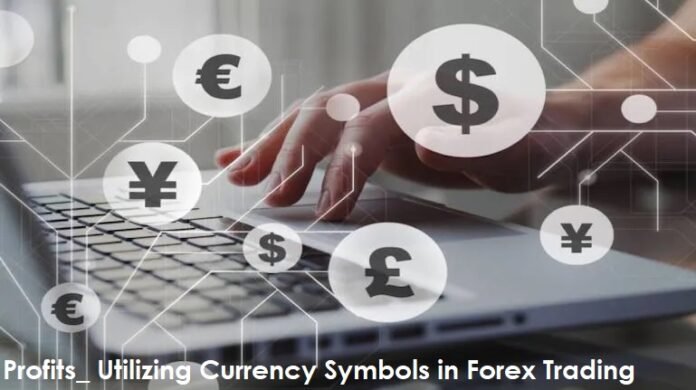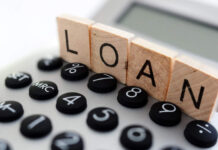Today’s digital world offers endless options for online jobs and occupations from which you can have vast amounts of income.
Forex trading means dealing in foreign exchange or purchasing and selling currencies.
A job like this is not your regular 9 to 5 job. You can work whenever you want, wherever you want, while being independent.
You might want to learn about and analyze the term simbol mata wang. It is more than just a character that has a deeper meaning.
Don’t overlook the opportunity to use these emblems to your advantage.
The Language of Currency Symbols
The foreign exchange market utilizes a visual language comprised of money representations. They serve as a means of distinguishing between various international money. These signs offer a standardized method of representing currencies and allow traders to communicate effectively with one another.
The dollar sign ($) stands for the United States dollar, the euro symbol (€) stands for the Euro, and the yen symbol () stands for the Japanese yen. For successful involvement in foreign exchange trading, familiarity with the language of money icons is a prerequisite.
It facilitates the rapid recognition and evaluation of currency pairs, the accurate interpretation of market data, and the prudent execution of trading decisions.
Traders fluent in the universal language of banknote symbols are more competent to take advantage of opportunities in the foreign exchange market.
Symbolic Significance
Symbols frequently used in currencies have deeper meanings beyond their functional applications. Some of them have historical or cultural meanings and offer valuable insights about the respective banknotes. These insights can be found in certain ones.
The historical importance of Spanish currency in the Americas is shown in the fact that the representations for United States Dollar, represented by the dollar sign ($), originates from the Spanish peso (€) sign. Similarly, the Japanese yen icon is derived from the Chinese character for the word “round,” symbolizing the shape of coins traditionally used in Japan.
Better awareness of market behavior and prospective trading opportunities can be gained by traders if they recognize and comprehend the symbolic meanings of various market indicators.
Currency Symbols and Market Dynamics
The constantly shifting dynamics of the foreign exchange market are mirrored in the fluidity of the characters used to represent different currencies. The value of a coin can be impacted by a number of factors, including economic data, political events, and operations conducted by the central bank.
These factors are all reflected in the icon used to represent the money. Traders need to maintain a continual focus on monetary symbols in order to identify trends and execute profitable deals accurately.
Deciphering the various variations in money emblems can inform traders about the state of the market and prospective shifts in supply and demand.
Analyzing Currency Symbols
To discover recurrent patterns and developing tendencies, one can analyze currency symbols using technical analysis approaches. Several different trading strategies, including chart patterns, indicators, and others, can be applied to analyzing money icons.
For instance, examining candlestick patterns on charts of currency representations might help one determine appropriate entry and exit locations for trades. When applied to these symbols, technical analysis allows traders to increase both their trading strategies and their chances of being successful.
Currency Correlations and Symbolic Relationships
Financial symbols are deeply ingrained in a complex web of interdependencies. Currency correlations, which quantify the statistical link between distinct currency pairs, can be analyzed to get insight into the market dynamics.
This can be accomplished by looking at the data. Traders who take advantage of the correlations between the various currency symbols can diversify their portfolios, lowering their risk exposure and increasing their potential profits.
When traders have a solid grasp of the dynamics between the various currency symbols, they are better equipped to reap the benefits of arbitrage and hedging approaches.
Using Currency Symbols for Trading Strategies
These currency symbols are the foundation on which trading strategies in the foreign exchange market are based. Traders use currency symbols to construct trading strategies by studying currency pairs, carrying out carry trades, and hedging their positions.
Brokers can identify different pairs that have strong fundamentals for long-term investment by analyzing symbols and the economic indicators that are related to them. One example of this would be investing in currency pairs with excellent fundamentals.
Investors and traders can also benefit from the use of monetary icons when evaluating interest rate spreads and carry trading opportunities. By incorporating these icons into their trading strategies, traders can improve their odds of turning a profit on their investments.
Conclusion
The foreign exchange market hugely depends on these symbols for the currencies involved. If you want to be successful in trading, it is indispensable for you to understand and correctly utilize these representations.
Traders can make more profitable picks if they educate themselves about the language of currency icons, comprehend the meaning of these symbols, evaluate the relationships between them and the market dynamics, and use this information in their trading tactics.
When used as instruments in the trading of foreign currency, monetary symbols have the potential to develop into prosperous gateways.
Must Read : Become a Profitable Forex Trader with stunning Swing Trading strategies



































































